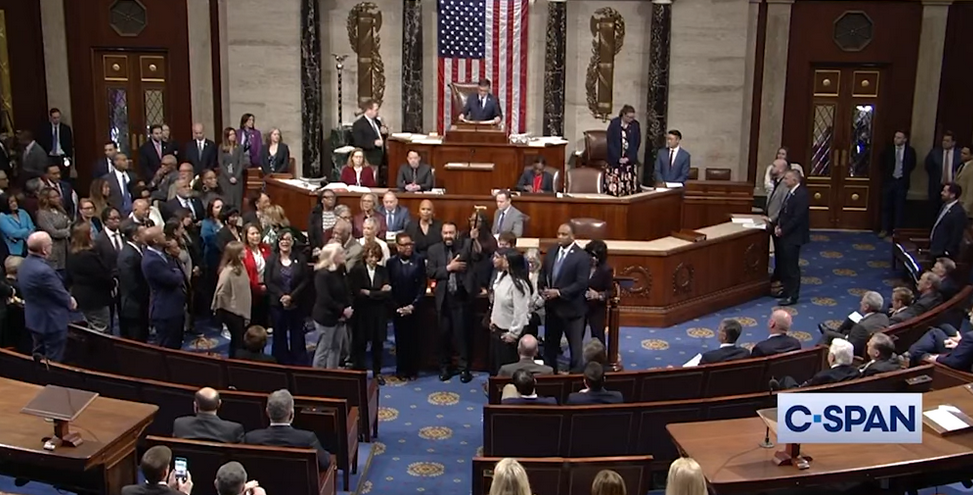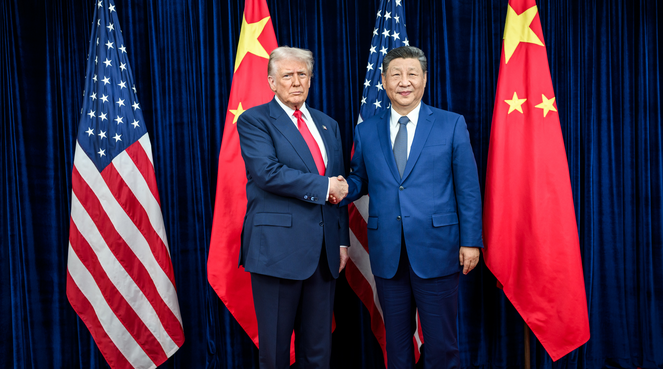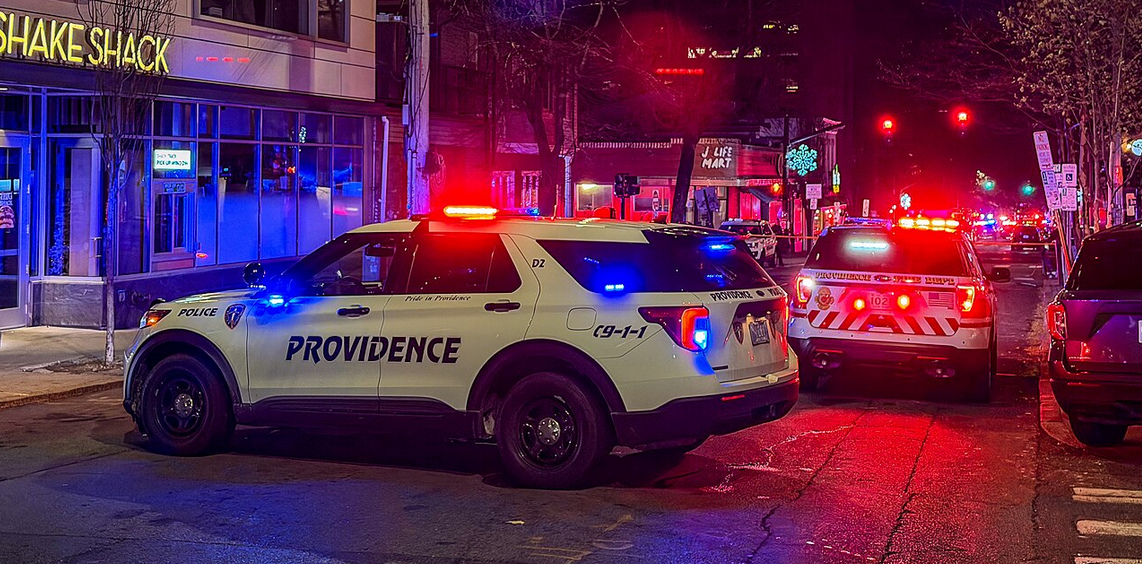THE RISE OF DONALD TRUMP AND THE END OF THE DYNASTY OF WHITE CHRISTIAN AMERICA
Dr. Joyce Watford, an Educator and a Descendant of American Slaves
September 22, 2016
PART II
Deep, deep, tangled roots and chameleon politics for the soul of a country and the roles of religion and race in our country have given rise to Donald Trump in today’s wild and crazy political arena. In their desperation for resuscitation and relevance, white Christian Americans are embroiled in a battle for life, still unfolding right before our eyes. And Donald Trump appears to be their last best hope for survival—a most unlikely Savior!
First of all, we need to understand what White Christian America is and who white Christian Americans are. A simplistic understanding of what White Christian America is begins with broad observations and analyses of the development and growth of white Protestant ministries from revival tents to mega-churches to prosperity ministries over time and the influence that their leaders—the likes of Billy Graham, Pat Robinson, and Jerry Falwell—had on Washington and its political leaders, their policies, and government. White Christian America, then, within that context, is both a historic, systemic institution for social control, steeped in race and religion and skewed in favor of white Christian Protestants living in America, who are also known as white Christian Americans.
The roots of White Christian America reach all the way back to northern Europe, and its character can be traced back to WASP (White Anglo Saxon Protestants)—a term often used to describe the country’s traditional cultural and religious core. Thus White Christian America (WCA) is a term used to describe the domain of white Protestants in America. Over time, the domain has broadened and developed into two main branches or domains: a more liberal branch or domain referenced as “mainline Protestants,” geographically located in New England and the upper Midwest/Great Lakes region. The second branch or domain is the more conservative, evangelical Protestant America, geographically located in the South and lower Midwest/Ozark Mountains region. The differences between the two branches are rooted in disagreements over the fundamental tenets of religion, approaches to diversity, and lifestyle accommodations with regard to the modern world and science.
Nevertheless, WCA is made up of powerful special interest groups accustomed to wielding their power and influence to turn the country in their direction.
WCA has shaped and dominated what is considered mainstream America for all Americans, from early times in history, until recently, as its numbers have waned and times have changed. Yet WCA still matters today in politics because, as a whole, it has been the most powerful cultural force in the history of the country but is now fading and leaving many whites, behind, with feelings of dislocation and uncertainty of their place in the cultural changes taking place around them. Their place has, historically and traditionally, been one of racial and social superiority, power, and influence.
Secondly, what has WCA to do with Donald Trump? As we recall, the Republican Party quickly denounced Trump, early on, as one of them, in Trump’s 2016 campaign for the coveted, highest position in the land, the POTUSA in 2017. But few of us really understood why the traditional Republicans kept saying that Trump was not one of them. “He is not a traditional Republican,” they said repeatedly, while Trump, amidst the attacks, kept spouting what he believed was their core values—exclusivity or anti-inclusion, anti-Obama or denigration of Obama and his administration, anti-abortion, anti-gay rights, anti-gun control, anti-Muslims, anti-Hispanics, anti-immigration, anti-civil rights for blacks and women, anti-globalism, anti-cooperation, anti-progressivism, etc., etc., —all mingled in with coded rhetoric to communicate and appeal to special interest groups (like WCA [and other malcontents]) with deep-seated resentments for the times they live in. Over time, these special interest groups have become distrustful of traditional Washington politicians whom they accuse and blame for selling them out and taking the country in wrong directions which have not benefited them.
Therefore, they feel that something must be done about the Washington politics and where the country is headed, especially after an unexpected eight years under the leadership of a black POTUS, something which, to them, never should have happened and cannot ever happen again! These special interest groups are hard-pressed to send someone to Washington to take the country back for them—by rolling it back to bygone times—when life was great for them. As they flexed their muscles and searched for someone who would represent them in the next Presidential election, they set their sights on a certain ego-crazed, corporate businessman-billionaire, with no history of public service and no prior political experience, but whom they believe would not wobble against them in Washington. Their man, of course,could wobble against everyone else, but not against them! Trump easily tapped into, and exploited, their disillusionment, along with their disenchantment, with Washington, and proved himself their man—an outsider to send to Washington to turn things around for them and not be tempted by, or indebted to, the corrupt, incompetent Washington politics surrounding him.
Trump’s coded rhetoric appeared to reach the politically disaffected groups who only needed to hear him repeat back to them their insidious, nostalgic lament for the lost utopian world of White Christian America (WCA) and their obsession with restoring strength to their hold on Washington which WCA had exercised for centuries and which white evangelical Protestants had also done for decades—but which, now, the power and influence of both were rapidly waning, due to their pending demise. To understand better the nature of white evangelical Protestants, both the old and new Moral Majority morphed into today’s white evangelical Protestants who, until the 2000s, had a stronghold on the government’s political pulse for continued domination and control. Those traditional Republican insiders who had insisted earlier that Trump was not one of them—but who are also card-carrying members of WCA—came around to endorse Trump when they recognized their own white evangelical Protestant code in Trump’s messages to the American people; and, consequently, they heard and found common ground with him (the restoration of power and influence to WCA and Heartland America!), and that led to their reasons to endorse Trump, while outsiders like the majority of us missed what was happening or mistook it for something less malicious, bellicose, and deadly.
But the truth is that there is a real cultural-political war going on right before our eyes for the control and domination of the USA and the American people, and the participants fundamentally are not who we commonly think of as Democrats and Republicans. The participants waging the war are the two remaining vestiges of WCA—the white mainline Protestants, believed to be liberal and forward looking, which we typically think of as Democrats and the white evangelical Protestants, typically thought of as ultraconservative and regressive or backward looking and which we recognize as Republicans.
Our country was founded by white Protestant Christians whose principles and ideals have formed and dominated the operations of government for centuries, until the last quarter of the twentieth century. Protestantism originated as a counter religion to Catholicism in England in the 16thcentury, during the reign of Henry VIII, who played a consequential role in the separation of the Church of England from the Roman Catholic Church, with which he was in conflict over Church doctrines pertaining to marriage and divorce. Henry VIII’s opposition to the doctrines of the Roman Catholic Church led to the English and Protestant Reformations because Henry VIII wanted a male heir, but was not permitted to divorce and remarry under the doctrines of the Catholic Church, which upheld the “til death do us part” kind of marriage. Consequently, Henry VIII was known to take extreme measures to get rid of wives who could not give him a son. He married six times for the sake of his desire to have a male heir, which, consequently, led to his becoming instrumental in turning England from a Catholic nation into a Protestant one. In summation, England’s conversion from Catholicism to Protestantism was done primarily to accommodate Henry VIII’s desire and need for marital freedom (to remarry as many times as he wished), without perdition and/or punition. Because of Henry VIII, Protestantism was established in England asan alternate religion to Catholicism. Thus Protestantism originated as a religion out of necessity to serve personal interests.
American Protestantism has been around since the time of the founding fathers. It provided the foundation for the kind of government they set up in the New World. The founding fathers, who were white Protestant Christians, set the tone for government policies and American ideals that would become the bedrock of our nation’s history and development. As Protestantism grew in prominence and power in the country, it dominated what was perceived as the nation’s mainstream culture and became the standard-bearer for determining the “insiders” (who became White Christian America [WCA]) and the “outsiders,” (who was everyone else who was not white and Protestant, living in America)—a role and position that pretty much went unchallenged until the latter part of the twentieth century, when declining birth rates, new immigration patterns, and religious apathy and disaffiliation began to transform demography in the USA. These demographic shifts brought about political upheavals and power struggles in WCA, causing the institution to split into two branches which began to battle each other for political power and control of our nation’s government and its people.
WCA was in its heyday after World War II, when a number of institutions reinforced WCA’s worldviews and aspirations across generations. Some institutional exemplars included the YMCA, YWCA, the Boy Scouts, the Girl Scouts, the Masonic Lodge, and local country clubs with limited and outright bans on membership for Catholics, Jews, and ethnic minorities. Its golden age spanned the late 1940s and 50s, before the social unrest ballooned in the 1960s. WCA provided the country with cultural models to be emulated in homes, communities, art, and churches.
WCA used television during its heyday to transmit its ideals of American life. Ward and June Cleaver, for example, in “Leave It to Beaver,” became its model family, couple, and parents; Mayberry, its cultural community and Andy Griffith, its cultural sheriff; Norman Rockwell, its artist; Norman Vincent Peale, its ministers; and the King James Bible, its moral compass.
WCA’s depictions of a seamless, utopian world for white Christian Protestants in America were careful not to portray life which was outside of its ideal worldview and therefore was in contrast to its white Christian values. However, worlds parallel to the world of WCA existed for those Americans who were not white Christian Protestants. But as far as WCA was concerned, those worlds were invisible and, therefore, of no concern to WCA. WCA, at the time, was big enough, cohesive enough, and powerful enough to ignore those Americans and pretend that their parallel worlds really did not exist in order to fool everyone else into thinking that it was only WCA’s world around which the country spun.
TO BE CONTINUED IN PART III…
© 2016






